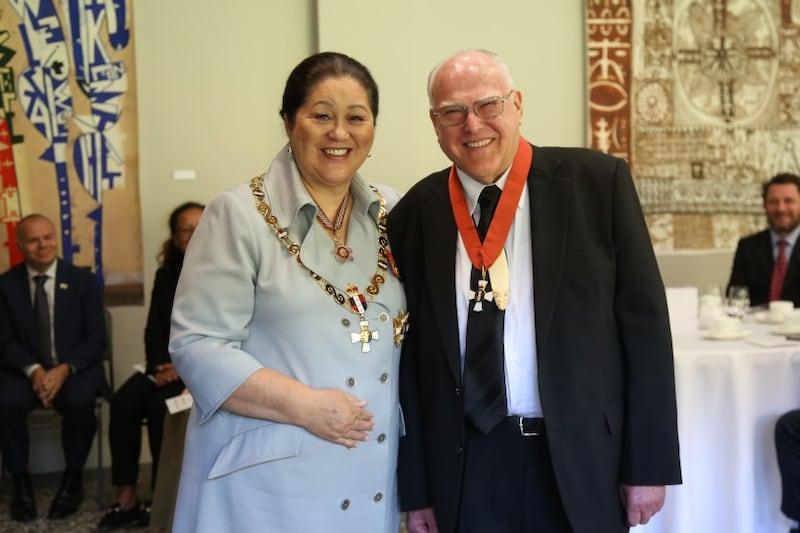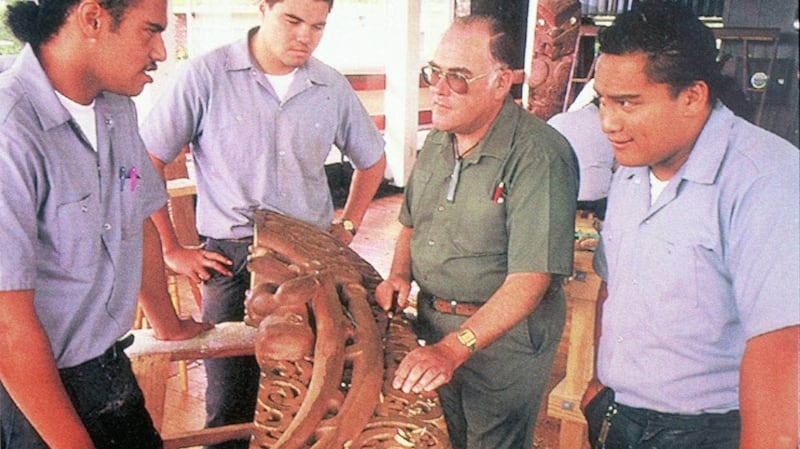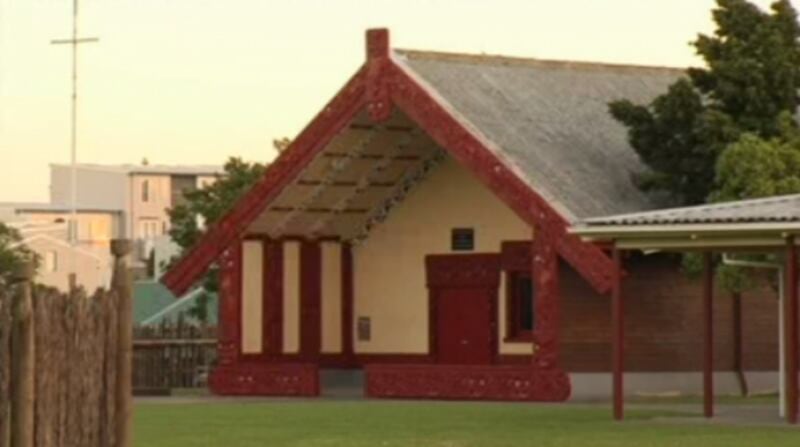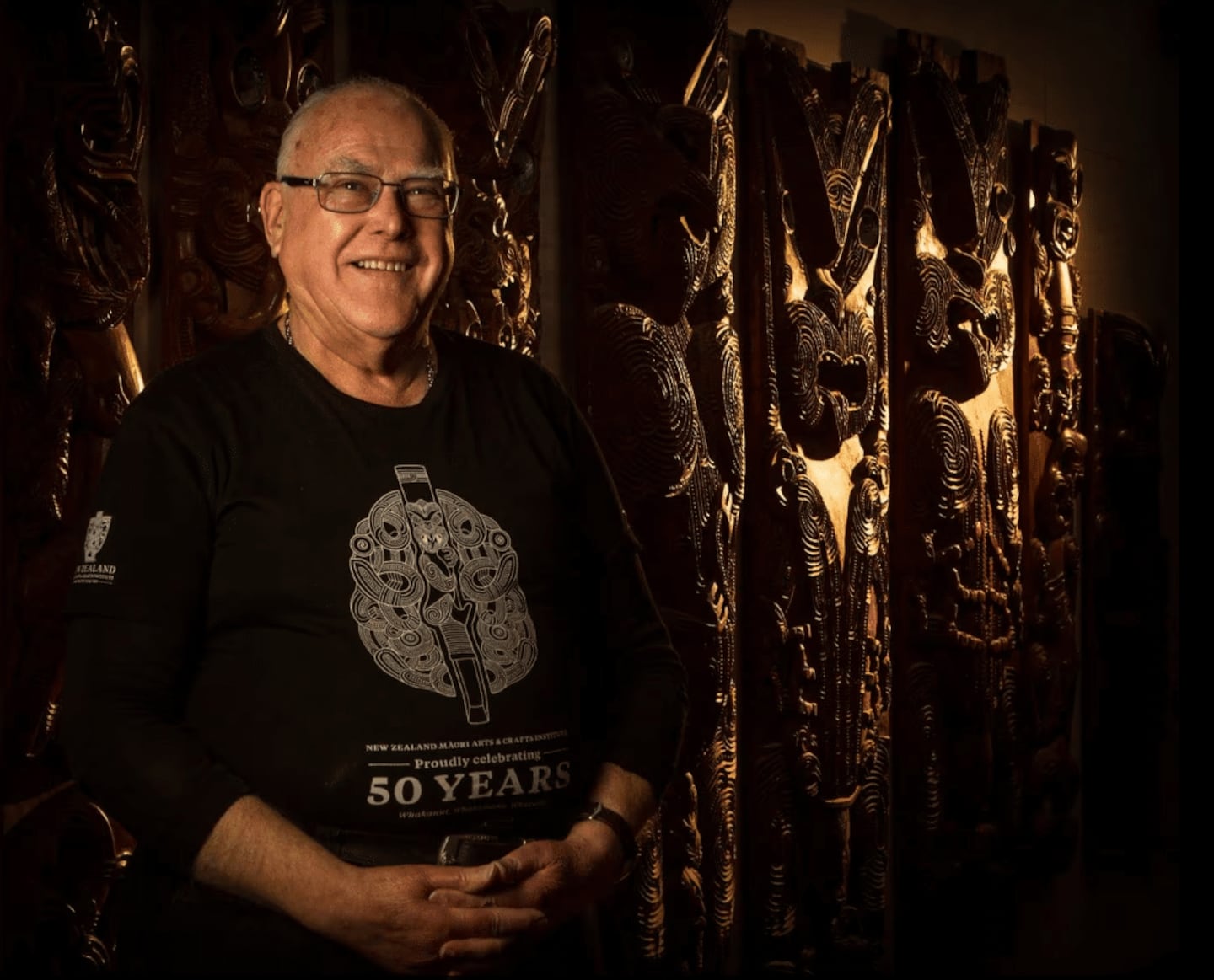For the first time in over 40 years, master carver Clive Fugill has returned to Auckland’s Hoani Waititi Marae where he was instrumental in the carving of its wharenui.
On Friday, Fugill (Ngāti Ranginui, Ngāi Te Rangi, Ngāti Raukawa, Ngāti Rangiwewehi) was made a Companion of the New Zealand Order of Merit for services to Māori Art.
He said he was “honoured, humble and thankful” to be recognised in with the CNZM, which comes 64 years after his teacher, tohunga whakairo rākau (master carver) Hōne Te Kāuru Taiapa received an MBE for wood carving himself.

Fugill has been with the New Zealand Māori Arts and Crafts Institute since its first intake in 1967 and, at 74 years of age, still lectures tauira or students.
“You never think it will happen, to be in the same league as your master, like Hōne – all these years of hard work and some of the struggles are now recognised.
“I hope this is a motivation for these young fellas, the tauira, to keep doing what they’re doing.”
Fugill said it was interesting that the Royal New Zealand Honour had come around now.
“It’s been 60 years of the New Zealand Māori Arts and Crafts Institute Act. The act’s purpose is to protect, preserve and perpetuate Māori arts and crafts. It is the very thing that pushes me to do what I do. To keep the act alive and active.”

Following the investiture ceremony at Government House, Fugill made his way to Hoani Waititi Marae - his first time back since 1979 when he finished carving the wharenui, Ngā Tūmanako.
Stuff was welcomed on to the marae where Fugill shared how it felt to be there after 44 years.
“I didn’t get to the opening and then there was one thing or another. So as we came in, I can tell you, it was very emotional. I’ve got a lot of good memories here,” Fugill said.
He acknowledged his connection and history with Taiapa, who on his deathbed, asked Fugill to finish carving Ngā Tumanako.
Fugill said he started to work on the interior of the wharenui on December 9, 1977, and finished almost exactly a year later.
He then gestured to the intricate designs of ships depicted in the carvings beneath the front matapihi in the wharenui.
Fugill recalled Taiapa saying the carvings were supposed to be of an anchor representing Pākehā contributions.
“[But] unfortunately, he passed away so that area underneath the window was vacant,” Fugill said.

Three Western-style ships now adorn those carvings, including Captain James Cook’s ship the HMS Endeavour on one side, and on the other, Fugill’s carvings of Abel Tasman’s two ships Zeehaen and Heemskerck.
The poupou inside the wharenui were deliberately carved using different art styles, Fugill said.
He said Taiapa was asked to name the carvings, but he declined, instead opting to use different tribal art styles without having to name them.
When asked what Taiapa was like as a teacher, Fugill said he was “one of the best”.
“He always had a saying: ‘The man that makes all the mistakes will learn everything. The man that makes no mistakes will learn nothing.’
“When you come here, you never stop learning, I like to think of it as a sharing process with the tauira. I don’t know everything. I carry a little notebook around and I record things.”
Fugill is now working on a book called Whākairo Carving. He said unlike other books with photos, this one will only feature his hand drawings of carvings.
When asked about his favourite projects, he said carving his own meeting house – for his own people.
“That is the highlight for any carver.”



